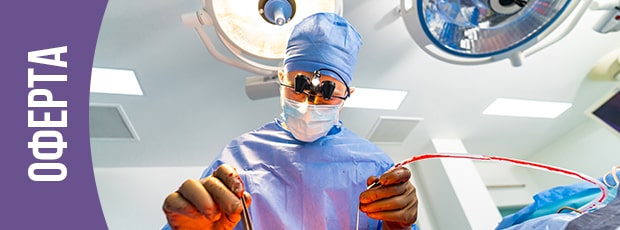What is scar removal surgery?
As the wound heals, tissue begins to heal over the wound, protecting it and replacing the damaged skin. As this fibrous tissue settles a scar appears. The goal of the scar removal procedure is to enhance or minimize the appearance of the scar. In other circumstances, scar revision surgery may restore some function to an area where the scar has grown and has interfered with normal range of motion.
Types of plastic surgery for scars
It is best to discuss the options with a doctor before making a decision.
Minimally invasive procedures
You may be offered to start with one of several minimally invasive procedures available to see the effect of these and whether this will improve the appearance of the scar:
- Corticosteroid injections: a common treatment than for certain types of scars, including hypertrophic and keloid scars.
- Bleomycin injections: a safe way to improve the appearance of hypertrophic scars, although research suggests that people with darker skin may be at risk of developing hyperpigmentation at the site. It has also been suggested that injecting a keloid scar with bleomycin is safe and effective, although it is quite common for the scar to reappear after treatment.
- Laser treatment: used to restore the surface of certain types of scars and make them smoother, flatter and less noticeable. Several sessions may be needed.
- Other resurfacing procedures such as chemical peels, microdermabrasion and dermabrasion are sometimes used to address acne scars. They remove the top layer of skin, smoothing it.
- Microneedling: treatment of scars with a device with small needles on the skin. The needles prick the skin and stimulate collagen production to make the skin appear smoother.
- Cryosurgery: one of the options for treating certain types of scars. Also known as cryotherapy, it involves swabbing or spraying liquid nitrogen on the scar to "freeze" it.
Types of scars that can be treated with the scar removal procedure
You can start by treating some scars with topical treatments or injections, but if you don't get the results you are looking for, surgery may be the next step. If you have one of these types of scars, talk to your doctor about what type of surgery might be effective. If you have ever undergone any type of surgical intervention, there may be scars left from the surgical incisions. Or the presence of acne scars that fade too slowly for you.
- Hypertrophic scars are usually broader or thicker convex scars at the site of the wound. They are often red or pink, but can vary in color and sometimes appear darker or lighter.
- Keloid scars are usually larger and more prominent than hypertrophic scars. They often grow beyond the borders of the original site of injury and have a higher recurrence rate than hypertrophic scars. Doctors often first treat these types of scars with corticosteroid injections, then eventually excise the scar. The process of excising the scar is known as excision. If the keloid recurs after excision, the final step of treatment is to cut it out again. This is followed by immediate radiotherapy to the scar.
- Contractures: when a burn or other type of serious wound heals, fibrous tissue sometimes replaces the elastic tissue that was there before the injury. This inelastic tissue is known as a contracture. It can limit the normal movement of tendons, muscles, and joints in the affected area.
Can plastic surgery treat acne scars?
Some dermatologists will suggest cosmetic treatments such as laser treatments, microneedling or chemical peels for acne scars. If that doesn't quite do the job, you can proceed with dermal fillers. However, minor surgery is also a treatment you may want to consider.
- Raised acne scars can be surgically "lifted" to make them even with the rest of the skin. This can make the scar less noticeable.
- Relief acne scars: you can start with non-surgical treatments such as corticosteroid injections. If these don't work, the doctor may recommend surgery.
Where can you have a scar removal intervention?
You can get an injury on almost any part of your body, so you can develop a scar on almost any part. The type of plastic surgery that is best for your scar can vary.
- The face is the most visible part of the body. A lot depends on the type of scar you have on your face. The treating doctor may recommend that you start with a process such as dermabrasion or laser resurfacing to smooth out an embossed scar. If you have a keloid or hypertrophic scar, an injection of medication to reduce the size may be suggested. They will then move on to excising the scar.
- The neck is also a fairly visible part of the body, so the doctor may talk to you about scar revision surgery that will reduce the appearance of the scar.
- In the presence of a contracture from a burn to the arm or leg, you may want to remove the scar to relieve some tension and restore some lost motion and function.
Risks and precautions in scar revision surgery
One of the biggest risks of scar revision surgery is that you may not get the exact results you want. Every scar is different, and a procedure that works on one scar may not be as effective on another.
Potential risks of undergoing the operation are:
- reaction to the anaesthesia used for the process
- bleeding, swelling or discoloration of the skin at the site of surgery
- deep vein thrombosis
- numbness at the site of surgery
- incision that does not heal properly
- infection
- possible need for additional revision operations
Preparation for the procedure
Before any scar removal procedure, the treating physician will want to determine the type of scar. Various characteristics are looked for, including:
- color
- loop
- thick
- vascularization (blood vessels involved)
Inspect the area where the scar is located. All options are then discussed, including benefits and risks.
How does scar revision surgery work?
The operation begins with the administration of anaesthesia. Depending on the procedure, only local anesthesia may be used and you may be awake during the procedure.
There are several types of scar revision surgery:
- Crop
- Skin grafting (often used for burn scars)
- Skin grafting (similar to skin grafting surgery)
- W-plasty: the surgeon repositions the scar by creating small triangles along its edge so that it falls more along the natural lines of the skin. This is a fairly versatile procedure with minimal risk. It can be particularly useful for the revision of hypertrophic scars, but may not be suitable for scars in the eyelid area and may result in a longer scar.
- Z-plasty: moves or redirects the lines of the scar to make it less noticeable.
Recovery
The recovery process can also vary depending on how extensive the surgery was.
There may be some swelling or bruising around the site during the first 1 or 2 weeks after surgery. You may use cold compresses to reduce swelling.
Another important tip: protect the area of the removed scar from the sun as much as possible. Broad-spectrum sunscreen or protective clothing should do the trick.







